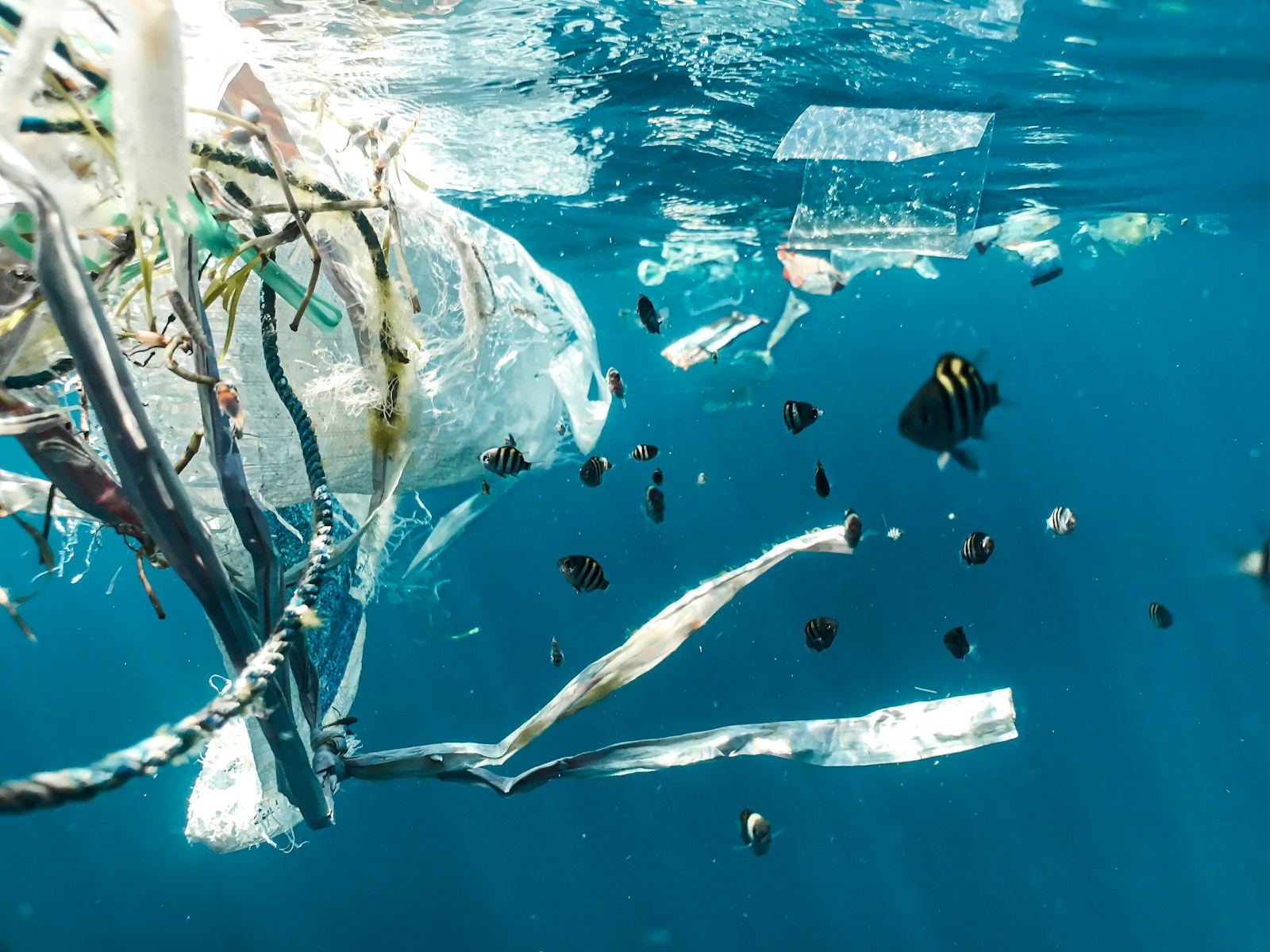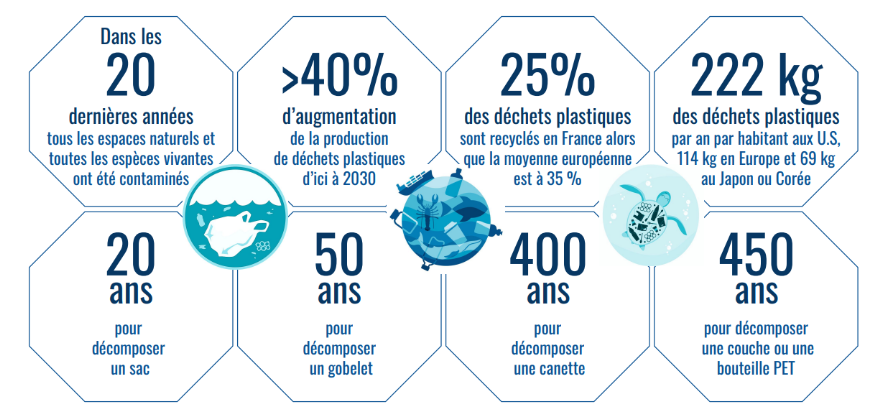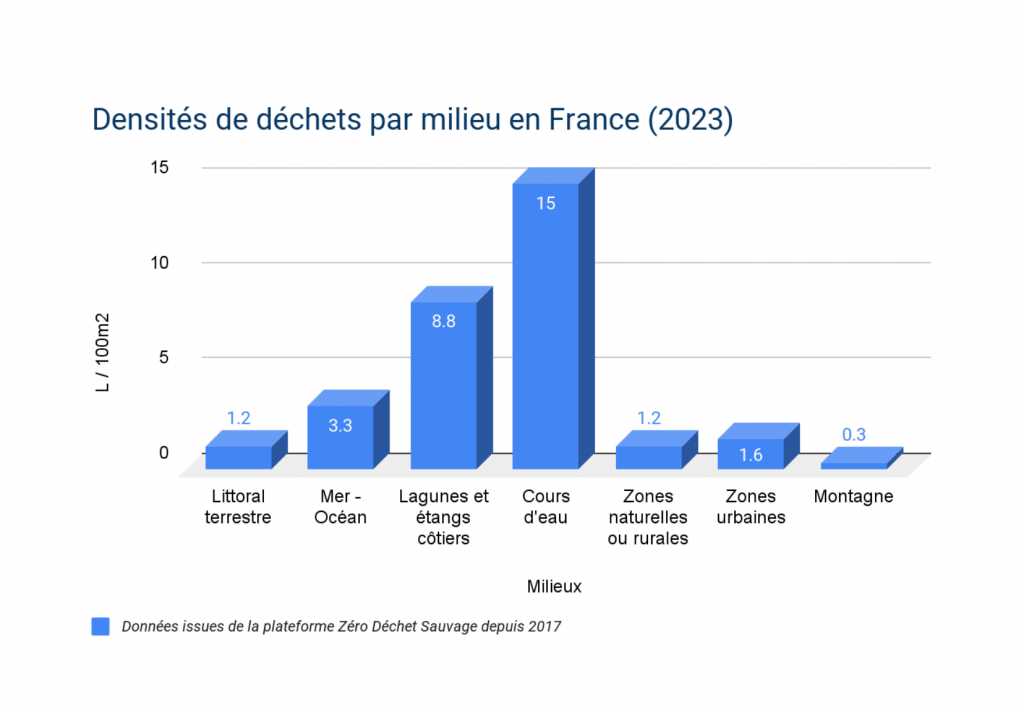

Up to 2,000 particles of microplastics could be ingested through the consumption of seafood, salt and bottled drinking water, but also via the particles we breathe, in textile fibres in particular. On average, we ingest up to 2.6 grams of microplastics per week.
The endocrine disruptors they contain are suspected of causing cancer, diabetes and reproductive disorders, and according to the WHO are responsible for 13 million deaths a year.
8 million tonnes of plastic pollute marine ecosystems every year (according the Ellen MacArthur Foundation). Some scientists predict that, by 2050, the quantity of plastic in the oceans will exceed that of fish.
80% of ocean pollution comes from land. Rivers, estuaries and soil are the main vectors used by waste to reach the sea.
Today, the most effective point of action to avoid this pollution seems to be upstream of the oceans, in other words in the rivers.
FDD Andurand is committed to tackling plastic pollution in rivers as effectively as possible.
Its actions take several forms:
With youth and education at the heart of its concerns, the FDD Andurand is keen to involve young people in these actions to help them discover the major issues involved in preserving the environment.
Characterisation is a scientific protocol, adapted for participatory science, which enables waste to be identified after collection. This stage produces a waste identity card:
In what environment were they collected? mountains, urban areas, rivers, etc .
At what level of the coastline? washed up, on the ground, buried, etc .
Material? plastic, glass, metal, cardboard, paper, wood, etc .
What is it used for? bottle, can, mask, cork, etc .
This data is entered into the Zéro Déchet Sauvagenational platform, launched bythe Association MerTerre and maintained by the National Museum of Natural History in Paris. By characterising and archiving the data collected, we are giving ourselves the power of knowledge.
The Fondation Andurand hopes that these operations will not be in vain, that they will be a launching pad to show that together, by contributing to a knowledge base, we can :
Too little is being done along rivers and streams, but the data is there:
In France, these are the areas where the most abandoned waste is found.
That's why the Foundation wants to dedicate its operations to rivers and streams .
